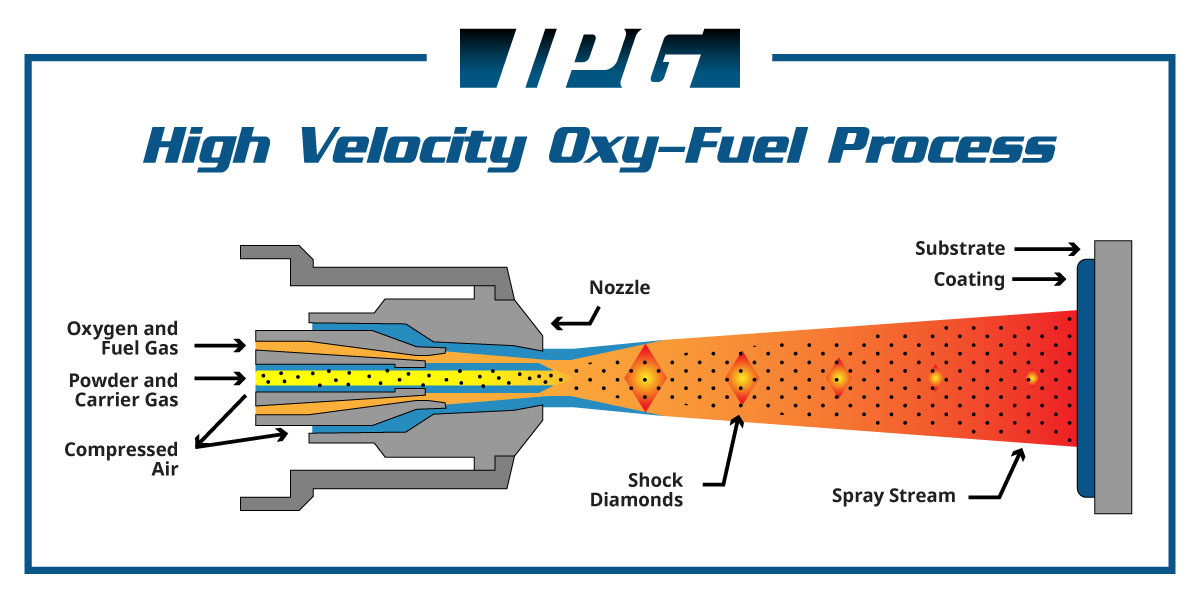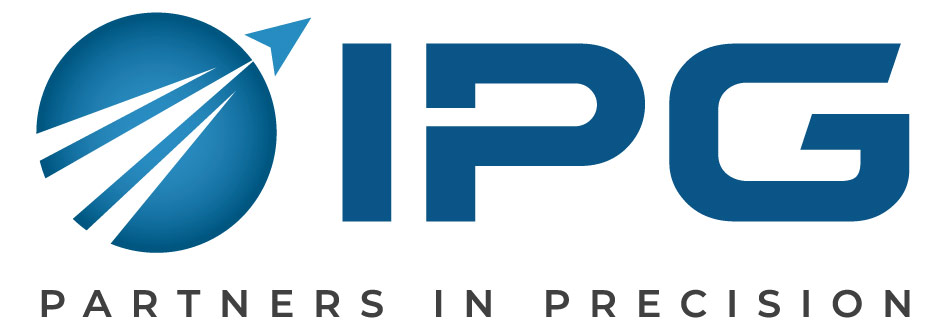For many years, chrome plating was considered the industry standard whenever a hard and long-wearing surface was needed. However, environmental protection laws were enacted, and hexavalent chromium was recognized as a known carcinogen, leading the material to fall out of favor. So, contractors needed to find an alternative:
Enter High-Velocity Oxygen Fuel, or HVOF, a subcategory of thermal spray grinding. The thermal spray process uses molten or semi-molten materials at a high speed on substrates (the part which is being finished). These coatings provide many unique properties on a wide range of applications in different industries, so the thermal spray process is a widely used method to coat many surfaces. The HVOF process is a bit different, though.
Click Here for our The State of Aerospace Manufacturing Infographic
Developed in the 1980s, HVOF is a high-velocity, low-temperature spraying process used to produce metallic and hard facing coatings. In the HVOF process, the kinetic energy of particles is more important than temperature–it uses high-impact energy to produce dense coatings at relatively low temperatures. Rather than using molten materials, HVOF uses the combustion of gases like propane, propylene, hydrogen or the liquid fuel kerosene as well as oxygen. The fuel and oxygen are fed into a combustion chamber (which is aimed at the substrate), where they mix and are ignited. Now under pressure, the mixture shoots out of the exit barrel faster than the speed of sound. A powder made of corrosion-resistant particles such as stainless steel or aluminum is added, which melts in the stream before re-solidifying on the part being finished.

This diagram shows how the HVOF process works.
The essential rule is that high combustion pressure is caused by gas and particle velocity, resulting in a high-quality coating. Some HVOF coatings can be sprayed very thick, usually up to 12 mm, because of the high velocity producing the coating.
There are many benefits of HVOF spraying over the original chrome plating. First, HVOF coatings are harder, which means less degradation, translating to improved hardness. Second, thicker coatings make for less residual stress, and a denser coating that does not crack under pressure; this also improves the part’s lifespan. Also, because these coatings are less porous, so they resist and protect parts from corrosion better than chrome. There are also no toxic chemicals to dispose of, such as hexavalent chromium, making HVOF an environmentally friendly solution.
Changing over to or implementing HVOF coatings can present itself as a challenging and expensive endeavor, but it’s worth the time to aerospace manufacturers dedicated to making the best parts.


